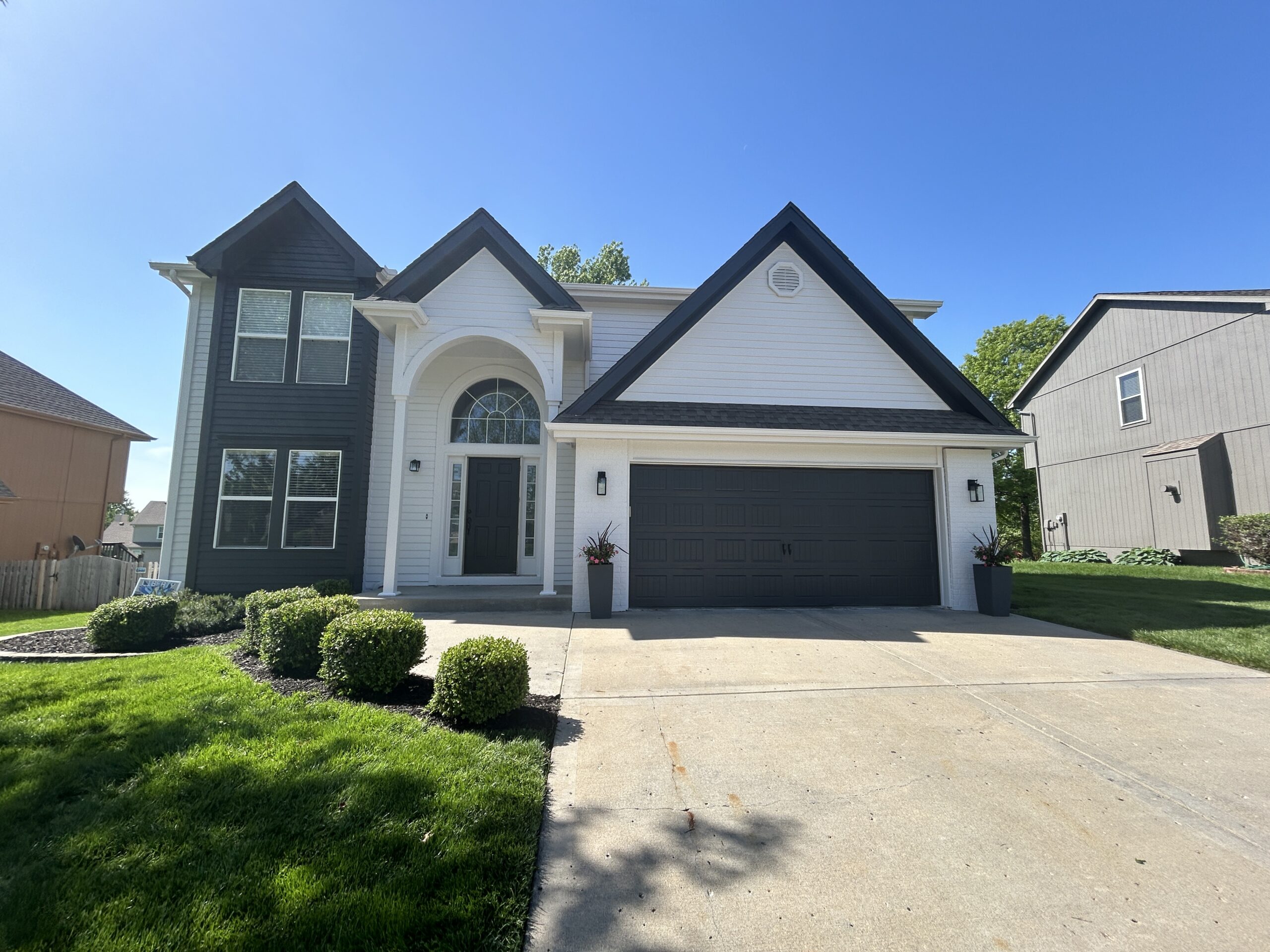When exterior coatings crack, fade, or peel—especially in harsh environments—elastomeric paint often becomes the go-to solution. But many property owners, from HOA boards to retail developers and facility managers, don’t fully understand what elastomeric paint is or when it makes sense to use.
This blog cuts through the noise. We’ll explain what elastomeric paint is, how it works on substrates like stucco, concrete, masonry, and EIFS, when it’s beneficial, and what factors to consider when hiring professionals.
What Is Elastomeric Paint?

Elastomeric paint is a high-build, flexible acrylic coating. Applied several times thicker than standard paint, it creates a rubber-like membrane that stretches and contracts with substrate movement.
-
Stretchability: Many formulations offer 100–300% elongation, allowing the coating to bridge minor hairline cracks.
-
Water Resistance: Its thick membrane repels water, reducing moisture intrusion and preventing efflorescence.
-
Breathability: Perm ratings around 6–12 allow trapped moisture vapor to escape—critical in humid climates.
How Elastomeric Differs from Regular Paint
Standard exterior acrylics — 2–3 mil thickness, last 5–7 years. Elastomerics are typically 10–20 mils, translating to 10–15 year lifespans when well-installed. The higher cost is offset by reduced lifecycle repaint needs.
When Should You Use Elastomeric Paint?
Ideal Substrates for Elastomerics
Elastomeric is especially suited for materials that naturally crack or need waterproofing:
-
Aged stucco
-
CMU (concrete block)
-
Poured concrete
-
EIFS systems
-
Tilt-up concrete panels
Best-Use Scenarios
-
Bridging small cracks: Most brands bridge hairline cracks ≤1/16″; specialty formulations can handle 1/8″.
-
Waterproofing: Ideal in coastal or heavy-rain zones, as a liquid water barrier.
-
High UV/Late-Life surfaces: Withstands fading and chalking, adding years to the exterior life.
-
Wind-driven rain: Popular in hurricane regions like Florida and Texas.
Where to Avoid
Elastomeric paints are not ideal for wood siding or previously painted glossy surfaces without extensive prep. Interiors generally don’t benefit due to aesthetics and breathability needs.
Benefits of Elastomeric Paint
-
Crack Bridging
Seals hairline cracks and prevents substrate degradation. Some actives connect gaps up to 1/8″. -
Weatherproof Protection
Establishes a continuous skin that resists standing water, ice, and salt spray. -
Energy Efficiency
Many light-colored elastomerics have high reflectivity (SRI-certified), helping reduce heat gain. -
Lifecycle Savings
Reduces repainting cycles. Repairs only needed when significant cracking appears.
Product Spotlight – Top Elastomeric Paints
| Brand | Product | Elongation | Perm (perm rating) | Best For |
|---|---|---|---|---|
| Sherwin-Williams | ConFlex XL High-Build | Up to 300% | 10 | Stucco, tilt-up, masonry |
| Benjamin Moore | Ultra Spec® Masonry Elastomeric | 200% | 7.0 | CMU block, commercial masonry |
| BEHR PRO | Elastomeric Masonry, Stucco & Brick Paint | 400% | 6.5 | High-crack stucco |
| PPG | PERMA‑CRETE® Pitt‑Flex Elastomeric | 200% | 12 | EIFS, concrete paneling |
| Dunn‑Edwards | E100 FLEX | 150% | 10 | Parapets and building exteriors |
How to choose:
-
Higher elongation is ideal when structural movement is frequent.
-
Higher perm is preferable in humid zones to avoid vapor lock.
-
Flat/matte finish often chosen for best coverage and water resistance.
Surface Preparation Is Critical
Substrate Inspection & Repair
Start with a tension test on cracks. Repair anything >1/8″ with elastomeric caulks or concrete fillers. Blast or remove loose paint and efflorescence.
Primer Selection
Primer ensures adhesion:
-
Masonry primer: neutralizes substrate and increases adhesion.
-
Waterproofing base coat: used before topcoat on porous walls.
Application Thickness & Tooling
Apply at least two coats at 10–12 wet mils each. Use sprayer for base coat, then back‑roll. Thin coats compromise durability; too thick risks sagging.
Common Concerns & Misconceptions
-
Breathability: Some brands allow vapor escape; review perm rating to select appropriately.
-
Previously painted surfaces: Works over well-prepped coats, after thorough degreasing and abrasion.
-
Moisture entrapment: Yes—if applied to damp surfaces. Always prep and let walls dry completely.
-
Cost: Typically 50–100% more expensive than standard paint, but savings come over the first repaint.
The Role of a Qualified Contractor
Professional Application Matters
Thickness and proper adhesion require experienced crews with moisture meters and mil gauges.
Vetting Questions
Ask contractors:
-
Experience with elastomerics?
-
What prep do they recommend?
-
Which brands and perm ratings will they use?
Warranty & Maintenance
Look for 5–10 year product and labor warranties against cracking, peeling, and chalking.
Maintenance After Application
Routine Inspections
Annual checks for blistering or surface degradation. Conduct low-pressure cleaning to remove salt and dirt.
Avoid Harsh Chemicals
Use mild detergent. Solvents can damage the coating or the substrate below.
Touch-Up Protocols
Elastomerics don’t edge-blend easily. Best strategy is to repaint entire panels rather than patching.
Conclusion
Elastomeric paint is not just “another paint.” It’s a technical solution for buildings that suffer from cracking, weather exposure, or periodic water intrusion. With proper substrate prep, right product selection, and skilled application, it provides long-term durability, aesthetic value, energy savings, and peace of mind.
If your facility manager, HOA, or construction team is considering an elastomeric system, now is the time to move. A spec-grade coating properly applied will extend life cycles, reduce future maintenance, and offer measurable returns.
Thinking about elastomeric paint for your property? Schedule a site assessment with our coatings experts to determine perm ratings, substrate analysis, and application methods to ensure you get lasting results.


